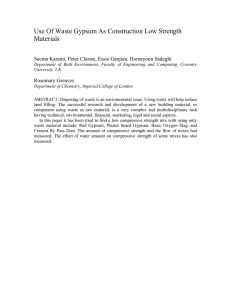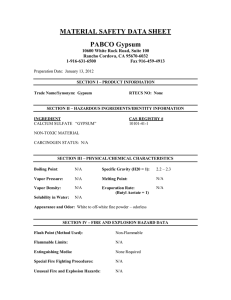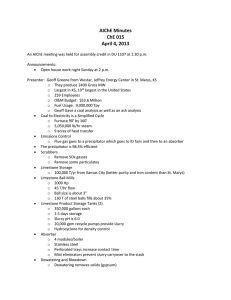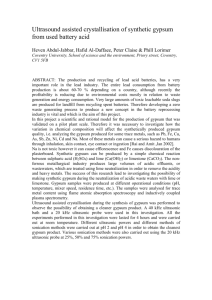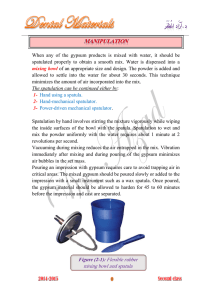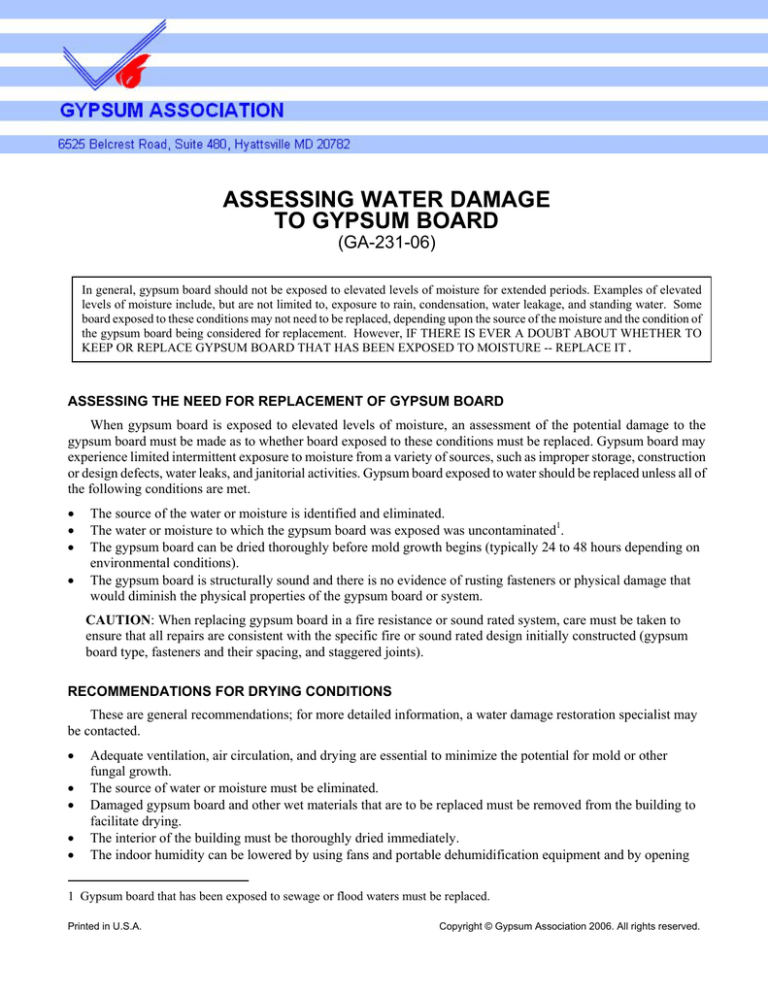
ASSESSING WATER DAMAGE
TO GYPSUM BOARD
(GA-231-06)
In general, gypsum board should not be exposed to elevated levels of moisture for extended periods. Examples of elevated
levels of moisture include, but are not limited to, exposure to rain, condensation, water leakage, and standing water. Some
board exposed to these conditions may not need to be replaced, depending upon the source of the moisture and the condition of
the gypsum board being considered for replacement. However, IF THERE IS EVER A DOUBT ABOUT WHETHER TO
KEEP OR REPLACE GYPSUM BOARD THAT HAS BEEN EXPOSED TO MOISTURE -- REPLACE IT.
ASSESSING THE NEED FOR REPLACEMENT OF GYPSUM BOARD
When gypsum board is exposed to elevated levels of moisture, an assessment of the potential damage to the
gypsum board must be made as to whether board exposed to these conditions must be replaced. Gypsum board may
experience limited intermittent exposure to moisture from a variety of sources, such as improper storage, construction
or design defects, water leaks, and janitorial activities. Gypsum board exposed to water should be replaced unless all of
the following conditions are met.
The source of the water or moisture is identified and eliminated.
The water or moisture to which the gypsum board was exposed was uncontaminated1.
The gypsum board can be dried thoroughly before mold growth begins (typically 24 to 48 hours depending on
environmental conditions).
The gypsum board is structurally sound and there is no evidence of rusting fasteners or physical damage that
would diminish the physical properties of the gypsum board or system.
CAUTION: When replacing gypsum board in a fire resistance or sound rated system, care must be taken to
ensure that all repairs are consistent with the specific fire or sound rated design initially constructed (gypsum
board type, fasteners and their spacing, and staggered joints).
RECOMMENDATIONS FOR DRYING CONDITIONS
These are general recommendations; for more detailed information, a water damage restoration specialist may
be contacted.
Adequate ventilation, air circulation, and drying are essential to minimize the potential for mold or other
fungal growth.
The source of water or moisture must be eliminated.
Damaged gypsum board and other wet materials that are to be replaced must be removed from the building to
facilitate drying.
The interior of the building must be thoroughly dried immediately.
The indoor humidity can be lowered by using fans and portable dehumidification equipment and by opening
1 Gypsum board that has been exposed to sewage or flood waters must be replaced.
Printed in U.S.A.
Copyright © Gypsum Association 2006. All rights reserved.
up the building when the outside air is drier than the air inside the structure.
Closets, cabinets, and doors between rooms should be opened to enhance circulation of air.
Fans should be used to increase air movement. (Central HVAC systems should not be used for this purpose if
the air ducts were covered with water during the incident that created the wet conditions.)
For information on safe practices to be followed when working in water damaged structures, publications of
the Federal Emergency Management Agency (FEMA)2 should be referenced.
Note: Once the gypsum board has been thoroughly dried, it should receive a final inspection for defects
before redecorating.
ADDITIONAL SOURCES OF INFORMATION
The following Web sites and standards provide information and recommendations for treating mold growth;
other Web sites also provide similar suggestions.
California Indoor Air Quality Program at http://www.cal-iaq.org/iaqsheet.htm
Federal Emergency Management Agency at http://www.fema.gov/pdf/hazards/fststpbr.pdf
New York City Department of Health at http://www.ci.nyc.ny.us/html/doh/html/epi/moldrpt1.html
U. S. Environmental Protection Agency at http://www.epa.gov/iedweb00/pubs/moldresources.html
Standard and Reference Guide for Professional Mold Remediation, IICRC S520 (Available from Institute of
Inspection, Cleaning and Restoration Certification, 2715 East Mill Plain Road, Vancouver, WA 98661.)
Standard and Reference Guide for Professional Water Damage RestorationI, IICRC S500 (Available from
Institute of Inspection, Cleaning and Restoration Certification, 2715 East Mill Plain Road, Vancouver, WA
98661.)
Gypsum Association
6525 Belcrest Road, Ste 480
Hyattsville, MD 20782
301-277-8686
Fax: 301-277-8747
www.gypsum.org
2 FEMA, Repairing Your Flooded Home. Available from the Gypsum Association
2
GA-231-03


